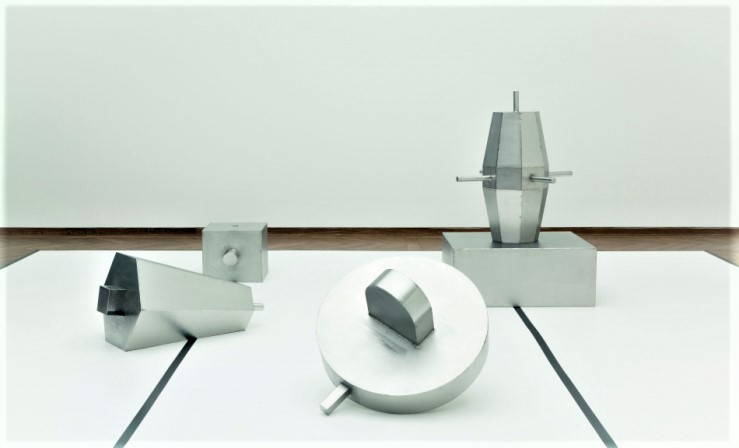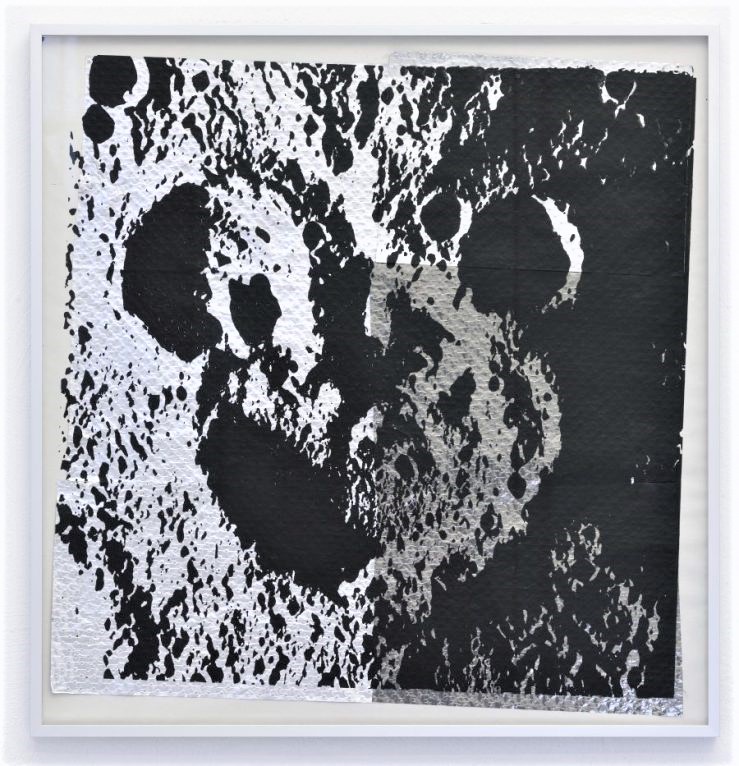
Monday, 07 July 2025
Informazione dal 1999
![a[cquisi]zioni/MAN](/images/posts/thumb/2018-12-sonia-leimar-images-courtesy-of-barbara-gross-munich-photo-by-wilfried-petzi.jpeg)
![a[cquisi]zioni/MAN](/images/posts/thumb/2018-12-sonia-leimar-images-courtesy-of-barbara-gross-munich-photo-by-wilfried-petzi.jpeg)
Pubblicato il 22 December 2018 alle 17:53
Nei primi anni del secolo scorso la scrittrice Grazia Deledda (Nuoro 1871 – Roma1936)aveva dato alla nostra isola visibilità in tutto il mondo, dopo essere stata la prima donna sarda a ricevere il Nobel per la letteratura. Erail 10 dicembre del 1927.
Questa la motivazione dell’Accademia di Svezia «per la sua potenza di scrittrice, sostenuta da un alto ideale, che ritrae in forme plastiche la vita quale è nella sua appartata isola natale, e che con profondità e calore tratta problemi di generale interesse umano».
Parole a mio avviso riduttive che esprimono poco della forza creativa, dell’umanità, dei sentimenti analizzati con semplicità e immediatezza,dove pathos e introspezione dei personaggi emergono come pennellate che definisconolo“sfumato”del nostro Leonardo Da Vinci oil“chiaro–scuro” del Caravaggio. Ombre e luci che si susseguono alla ricerca di quel“quid”che lega i contrari e che alle volte illumina il senso del vivere.
Ora, sono passati molti anni, ma l’ambiente socio-culturale del centro barbaricino è sempre in fermento, come l’esigenza, di deleddiana memoria, di superare i confini per nuove progettualità e nuovi confronti.
In questo contesto di apertura cosmopolita si inserisceilMAN–Museo d’arte della Provincia di Nuoro,che accoglierà il progetto“ViaSanGennaro” dell’artista pluripremiataSonia Leimer,presentato dall’ISPC InternationalStudio&CuratorialProgramdiNew Yorkin partnership con lo stesso museo, che insieme ad altri dieci artisti italiani ha vinto la quarta edizione dell’ItalianCouncil. Concorso dellaDGAAP– Direzione Generale Arte e Architettura contemporanee e Periferie urbane delMiBAC– Ministero per i Beni e le Attività culturali, la cui finalità è quella di promuovere l’Arte Contemporaneanel mondo.
 Courtesy Sonia Leimer The Poetics of the materia-Leopold Museum-2016 -Vienna-photo-by-Lisa-Rastl[/caption]
Courtesy Sonia Leimer The Poetics of the materia-Leopold Museum-2016 -Vienna-photo-by-Lisa-Rastl[/caption] L’Italian Council è un bando internazionale di supporto concreto a giovani artisti italiani che chiamati da strutture museali, fondazioni o associazioni,creano e realizzano un loro progetto artistico in relazione all’istituzione ospitante.
Il 17 settembre 2019,nella sede di New York dell’ISCP – International Studio & Curatorial Program, il curatore del MANLuigi FassieKarl Conteassisteranno alla mostra personale dell’artista in cui verrà presentata l’opera acquisita.
«Sonia Leimer – si legge nella motivazione dell’assegnazione del premio – esplora le nostre basi percettive, che si fondano sui modelli di esperienza individuali. Come prodotti di concreti contesti storici, stanze e oggetti subiscono una trasformazione in cui la storia e i cambiamenti della società diventano palpabili».
In attesa di vedere l’opera acquisita cerchiamo di conoscere questa giovane artista, vincitrice di borse di studio e prestigiosi premi tra cui l’Audi Award, Margarete Schütte-Lihotzky, Mak Schindler.
Sonia Leimer(Merano 1977) ha studiato architettura, ma come lei stessa ripetein più interviste, ha sentito subito l’esigenza di optare verso sintesi più creativenella gestione dello spazio e nella sperimentazione dei materiali, per un sua inclinazione più vicina al mondo dell’arte.
[caption id="attachment_118045" align="alignnone" width="739"] Sonia Leimer – Images courtesy of Barbara Gross, Munich. Photo by Wilfried Petzi.[/caption]L’architettura, infatti, presenta un’impostazione forse più rigida che non le avrebbe permesso quella creatività a cui lei aspirava. Una“libertà”trasmessagli dal suo professore universitario Joost Meuwissen, architetto ma oserei dire anche“filosofo”,uomo di grande sensibilità e acutezza di pensiero che con i suoi numerosi scritti ha lasciato un notevole contributo allo studio di questa disciplina.
Sonia Leimer ricorda come Joost Meuwissen incoraggiasse i suoi studenti a porsi sempre nuove domande, ad analizzare ogni cosa con senso critico,in quanto sosteneva che «le domande generano nuove idee», quasi un’eco socratico dove l’indagine maieutica crea confronto, conoscenza e verità.
Per cui lo spazio diviene“luogo”da affrontare criticamente, non solo subordinato a regole, numeri e quindi a pura progettazione. Non bisogna considerare solo le strutture che possono essere realizzate come gli edifici, sia pubblici che privati,ma nello spazio si interrelanocoloro che lo animano, che sono presenza attiva, che divengono i principali fruitori: gli uomini; quindi anche lo spazio deve“umanizzarsi”.Ma come è possibile che ciò avvenga? Dando valore a ciò che non viene considerato, né nominato, ciò che è marginale. Ecco che Sonia Leimer crea delle piccole epifanie, nuove vite, dando valore a ciò che noi, vestiti di pura consuetudine,non notiamo. Il suo è un linguaggio che ci induce a riflettere, a fare trasposizioni su oggetti/materiali che per esempio possono far parte del nostro vissuto, che possono essere parte integrante della nostra cultura.
La finalità in sintesi che ci suggerisce l’artista è «cercare significati tra le cose», ciò non conduce ad esiti speculativi ma a una capacità interpretativa che può aiutarci nella ricerca della verità, un superare i confini semantici, un andare oltre manipolazioni concettuali per ritrovare la purezza dei significati.
©Lycia Mele Ligios 2018

English Version
In the early years of the last century the writer Grazia Deledda (Nuoro 1871 – Rome 1936) had given our island visibility all over the world, after being the first Sardinian woman to receive the Nobel Prize for literature. It was December 10, 1927.
This is the motivation of the Swedish Academy «for its power as a writer, sustained by a high ideal, which portrays in a plastic form life as it is in its secluded native island, and that with depth and heat deals with problems of general human interest».
Words that I think are reductive express little of the creative force, of humanity, of the feelings analyzed with simplicity and immediacy, where pathos and introspection of the characters emerge as brushstrokes that define the “nuanced” of our Leonardo Da Vinci or the “light-dark”of Caravaggio. Shadows and lights that follow each other in search of that “quid” that binds the opposites and that sometimes illuminates the meaning of life.
Now, many years have passed, but the social-cultural environment of the barbaricino center is always in turmoil, as is the need, of Deleddian memory, of overcoming the boundaries for new projects and new comparisons. In this context of cosmopolitan openness there is the MAN-Museum of Art of the Province of Nuoro, which will host the “Via San Gennaro” project of the award-winning artist Sonia Leimer, presented by the ISPC – International Studio & Curatorial Program in New York in partnership with the same museum, which together with other ten Italian artists won the fourth edition of the Italian Council. Competition of the DGAAP – Directorate General for Contemporary Art and Architecture and Urban Peripheries of MiBAC – Ministry for Cultural Heritage and Activities, whose purpose is to promote Contemporary Art in the world.
The Italian Council is an international call for concrete support to young Italian artists who are called by museum structures, foundations or associations, create and implement their artistic project in relation to the host institution.
On 17 September 2019, at the NewYork headquarters of the ISCP – International Studio & Curatorial Program, the curator of MAN Luigi Fassi and Karl Conte will attend the solo exhibition of the artist in which the acquired work will be presented.
«Sonia Leimer – reads the motivation for awarding the prize – explores our perceptive bases, which are based on individual models of experience. As products of concrete historical contexts, rooms and objects undergo a transformation in which history and changes in society become palpable».
Waiting to see the work acquired we try to meet this young artist, winner of scholarships and prestigious awards including the Audi Award, Margarete Schütte-Lihotzky, Mak Schindler.
Sonia Leimer (Merano 1977) has studied architecture, but as she herself repeats in several interviews, she immediately felt the need to opt for more creative synthesis in the management of space and experimentation of materials, for her inclination closer to the world of art.
The architecture, in fact, presents a perhaps more rigid approach that would not have allowed the creativity to which she aspired. A “freedom” conveyed to him by his university professor Joost Meuwissen, architect but I would also dare to say “philosopher”, a man of great sensitivity and sharpness of thought that with his numerous writings has left a considerable contribution to the study of this discipline.
Sonia Leimer recalls how Joost Meuwissen encouraged his students to constantly ask new questions, to analyze everything critically, as he claimed that “questions generate new ideas”, almost a Socratic echo where the maieutic survey creates confrontation, knowledge is truth.
So the space becomes a “place” to be addressed critically, not only subject to rules, numbers and therefore to pure design. We must not consider only the structures that can be realized as the buildings, both public and private, but in space they interrelate those who animate it, which are active presence, that become the main users: men; therefore space must also “humanize”. But how is this possible? Giving value to what is not considered, nor appointed, what is marginal. Here Sonia Leimer creates small epiphanies, new lives, giving value to what we, dressed in pure custom, we do not notice. His is a language that leads us to reflect, to make transpositions on objects / materials that for example can be part of our experience, which can be an integral part of our culture.
The purpose in synthesis that the artist suggests is “searching for meanings between things”, this does not lead to speculative results but to an interpretative capacity that can help us in the search for truth, to overcome the semantic boundaries, to go beyond conceptual manipulations for rediscover the purity of meanings.
©Lycia Mele Ligios 2018
15 June 2025
02 June 2025
06 April 2025
30 March 2025
26 December 2024
26 December 2024
13 December 2024
01 December 2024
30 November 2024
24 November 2024
17 November 2024